Resetting the router usually resolves many issues, but sometimes, it can create a few. We have noticed that after resetting the router, a wireless connection is created, but when a device is connected to it, it does not get any Internet. In this post, we will see what to do if there is no Internet after resetting the router.
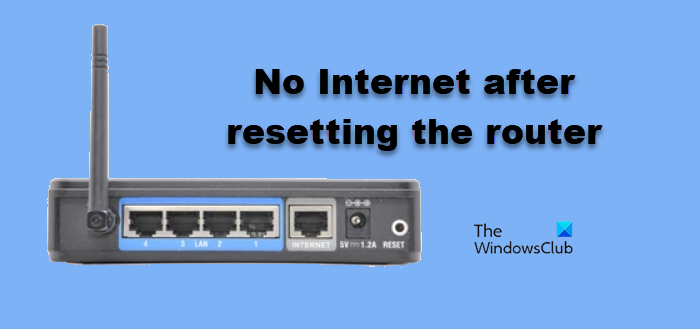
Why is my router connected but no Internet?
When the router shows that it is connected but there’s no internet, several factors could be at play. One common reason is that the router could not successfully re-establish a connection with the ISP. If the router fails to do so, due to issues like faulty cable or incorrect settings, it can show connectivity but no Internet. It’s also possible that devices connected to the network are outdated or have firmware issues with the router itself.
Fix No internet after resetting the router
If there is no Internet after resetting or restarting the TP-Link, CISCO, etc, router, execute the solutions mentioned below on your Windows computer:
- Check physical connections
- Power cycle your router
- Reconfigure the router
- Upgrade the router firmware
- Reset the computer’s network
- Reset network protocols
- Use Google Public DNS
Let’s get started with this troubleshooting guide.
1] Check Physical connections
Checking physical connections is an essential first step, as it is often the simplest yet most overlooked issue. Loose or disconnected cables are often the case, so ensure all the cables are firmly plugged into the correct ports on both the modem and the router. If there are separate modem and router devices, ensure the network cable is attached to the modem’s WAN or Internet Port, and then use an Ethernet cable to link the modem’s Ethernet port to the router WAN’s port. Additionally, ensure that the cable from the ISP is properly connected to the router’s WAN port.
2] Power Cycle your router
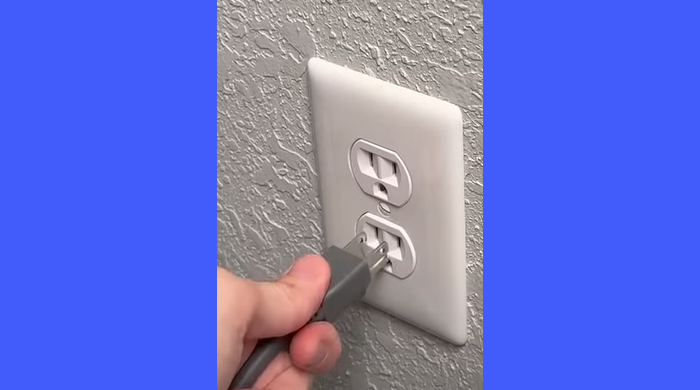
After resetting your router, you should also try power cycling it. This includes unplugging all the cables, waiting for a minute, and then plugging them back in. Doing so will allow your router to refresh the configurational changes you made and hopefully start working.
3] Reconfigure the router
Sometimes, reconfiguring the router can be beneficial, as this ensures that the router is properly connected to the Internet Service Provider. We will reboot the router, as this forces it to lose all the previous settings. Once done, reconfigure the router.
- To access the router’s settings, open a web browser, and type the IP Address, usually printed on a label on the back of the router.
- Log in using the router’s default username and password, or other general combinations such as username admin; password admin, or username admin; password 1234/0000.
- Follow the on-screen instructions to select the connection type and reconfigure the wireless network settings accordingly.
Once you’ve done this, reboot the device and the router and check whether the internet is back to its previous speed.
Read: How to find default username, password & login URL of any Router
4] Upgrade the router firmware
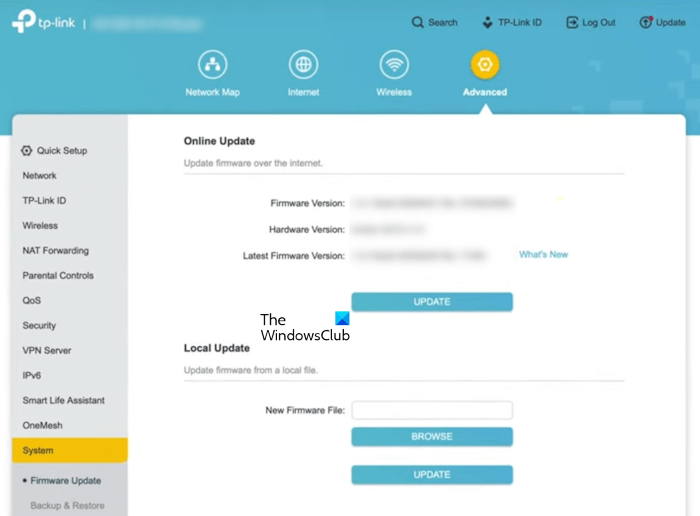
If you haven’t upgraded the router firmware for a long time, it’s high time to do so. For assistance, contact the router’s tech support, or check for any firmware update on the official router software. To know how to do so, refer to the steps mentioned below.
- Launch the Internet browser, and, go to the website of the router manufacturer.
- In the Menu tab, navigate to the Support section, type the router model number in the search bar, and press the Enter button.
- Now, go to the Downloads section, check out the latest router version, and download it on the device.
After downloading the firmware file, return to the router login page, and search for options like Upgrade, Admin, or Firmware. Click on it, and then on Browse to select the downloaded file and hit the Open option. Lastly, select the Update or Upgrade button.
5] Reset the computer’s network
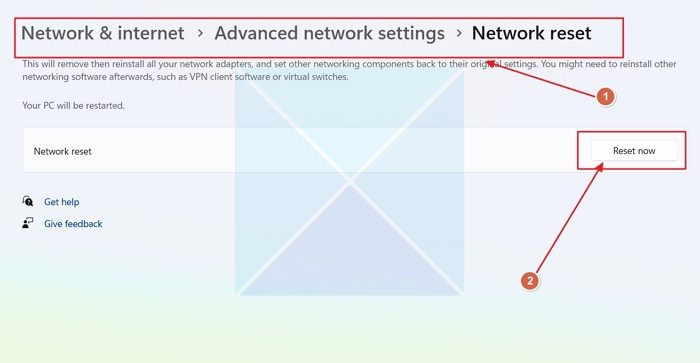
The next few solutions are for a scenario where one of the computers is unable to connect to the network after resetting the router.
Restoring Network settings to their default state by resetting the network protocol can also resolve this issue if it is due to corrupted or misconfigured network settings. Resetting it will allow the system to reconnect to the internet, so do the same, and execute the steps mentioned below.
- Click Win + I to open Settings and select the Network & internet settings.
- Scroll down to see and select Advanced Network settings, and then again scroll down to see More Settings.
- Click on it, select Network Reset, and then hit the Reset Now button.
Wait for the process to finish, and once done, reboot the system.
6] Reset network protocol
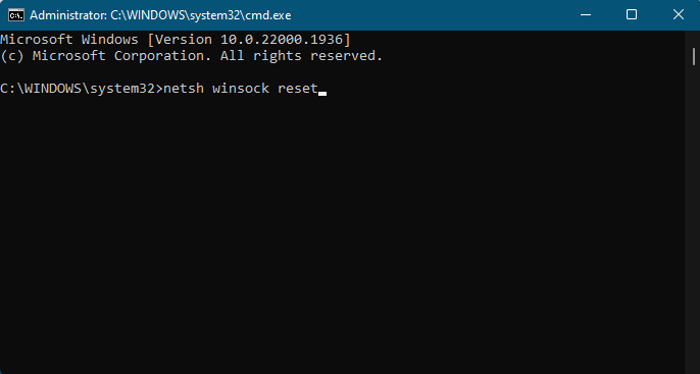
Next up, we need to reset your network protocols, which are building connections and transporting packets. To do so, open the Command Prompt as an administrator and then run the following commands.
netsh int ip reset
netsh winsock reset
ipconfig /flushdns
Finally, check if the issue is resolved.
Read: Not connected, No connections are available in Windows
7] Switch to Google Public DNS
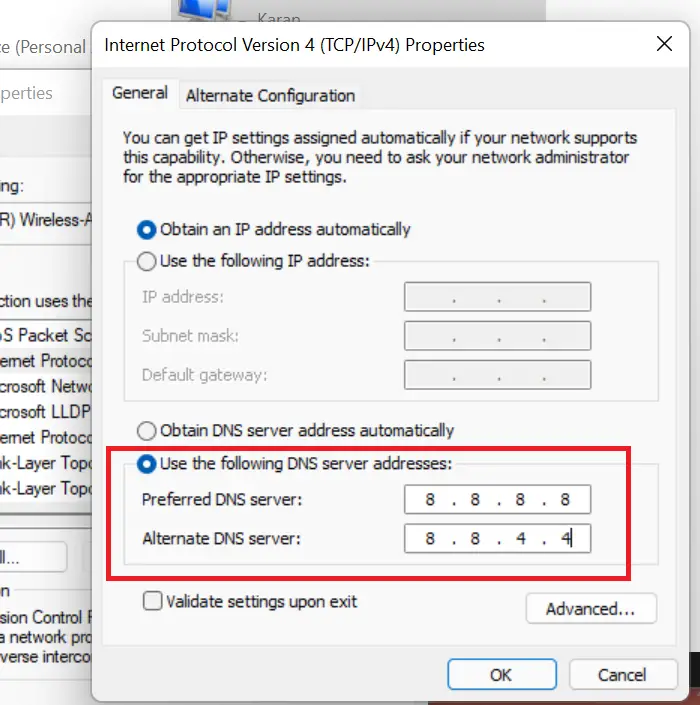
If the DNS settings are incorrect or misconfigured, the device may be unable to resolve website addresses, leading to no Internet issues. Additionally, if the DNS server is down or experiencing issues, it is recommended to switch to a more reliable DNS server. Here’s how to do the same.
- Open Control Panel.
- Go to Network & Sharing Center.
- Click on the hyperlink right next to Connections.
- Then, click on Properties.
- Double-click on Internet Protocol Version 4, and select Use the following DNS server addresses and tweak the preferred and alternate DNS server as follows to use Google Public DNS:
Preferred DNS Server: 8.8.8.8
Alternate DNS Server: 8.8.4.4
Once done, hit the OK button, and ensure that the Internet is working.
Hopefully, your able to connect to and use the Internet after following the solutions mentioned in this post.
Read: How to secure and protect your WiFi Router.
What happens if I factory reset my router?
When a person factory resets their router or any device, it forces the device to revert to its original settings as it was when it left the manufacturers. This process erases all customized configurations, including credentials and security protocols. However, performing a factor reset is a drastic measure and is usually considered as the last resort. Before opting for a factory reset, check out the article mentioned above for simpler solutions.
Also Read: Fix Network & Internet connection problems in Windows.